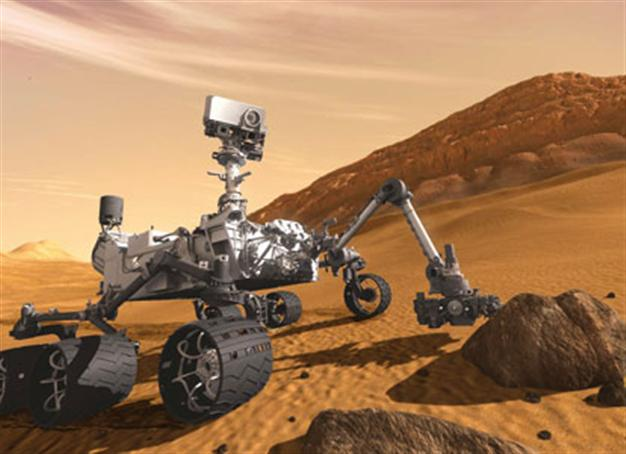NASA launching new machine ‘Curiosity’
CAPE CANAVERAL, Florida - The Associated Press

In this 2011 artist’s rendering, the Mars Science Laboratory Curiosity rover examines a rock on Mars with a set of tools at the end of its arm of about 2 meters. AP photo
As big as a car and as well-equipped as a laboratory, NASA’s newest Mars rover blows away its predecessors in size and skill.
Nicknamed Curiosity and scheduled for launch on Saturday, the rover has a 2-meter arm tipped with a jackhammer and a laser to break through the Martian red rock. What really makes it stand out: It can analyze rocks and soil with unprecedented accuracy.
“This is a Mars scientist’s dream machine,” said NASA Jet Propulsion Laboratory’s Ashwin Vasavada, the deputy project scientist. Once on the red planet, Curiosity will be on the lookout for organic, carbon-containing compounds. While the rover can’t actually detect the presence of living organisms, scientists hope to learn from the $2.5 billion, nuclear-powered mission whether Mars has or ever had what it takes to nurture microbial life.
Curiosity will be “the largest and most complex piece of equipment ever placed on the surface of another planet,” said Doug McCuistion, director of NASA’s Mars exploration program.
Lowering to Mars’ surface
Two meters long, nine feet meters) wide and 2 meters tall at its mast, Curiosity is about twice the size of previous rovers Spirit and Opportunity, weighs 1 ton and is loaded with 10 science instruments. Its formal name: Mars Science Laboratory, or MSL.
In a spacecraft first, Curiosity will be lowered to Mars’ surface via a jet pack and a tether system similar to the sky cranes used by helicopters to insert heavy equipment in inaccessible spots on Earth.
No bouncing air bags like those used for the Mars Pathfinder lander and rover in 1997 and for Spirit and Opportunity in 2004, Curiosity is too heavy for that. It is the kind of precision landing that officials said will benefit future human explorers on Mars.
The rover is scheduled to arrive at the mineral-rich Gale Crater next August
















